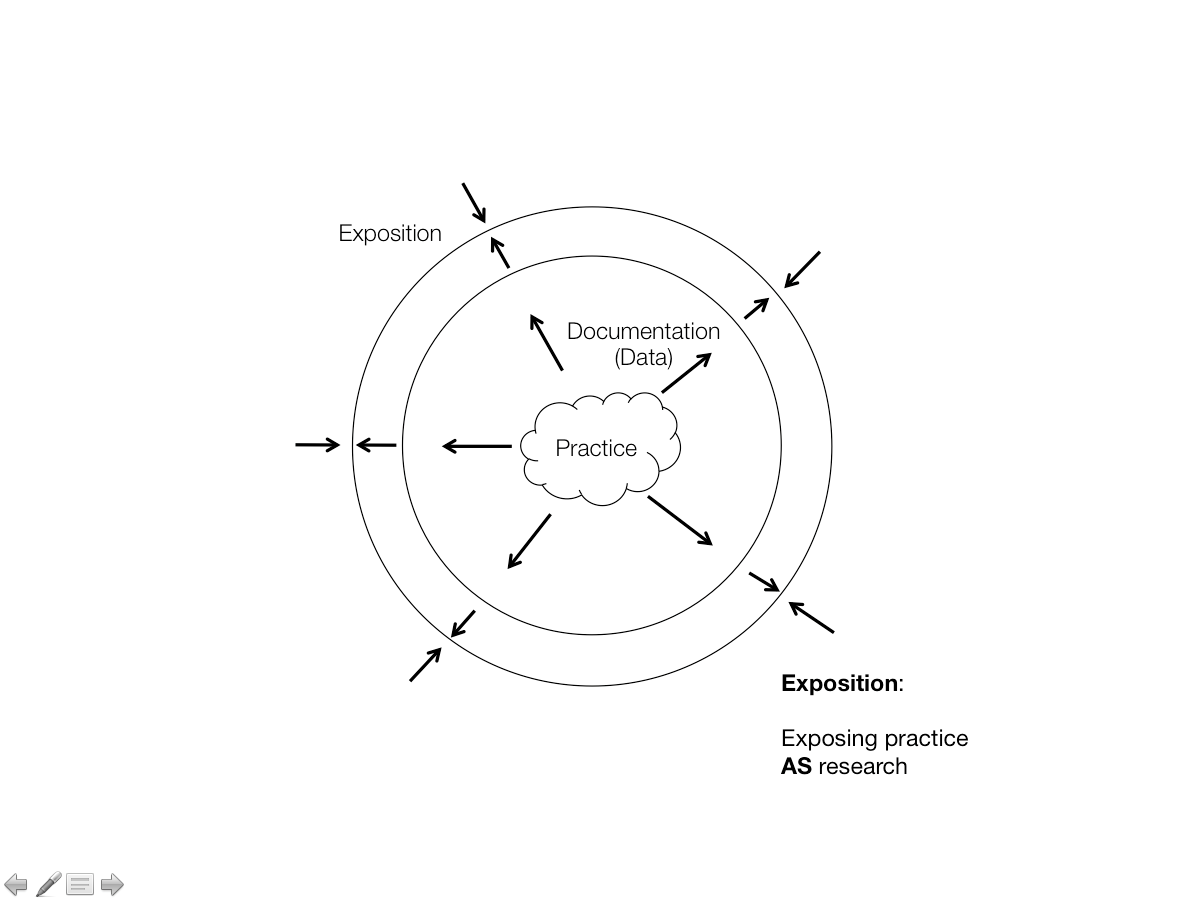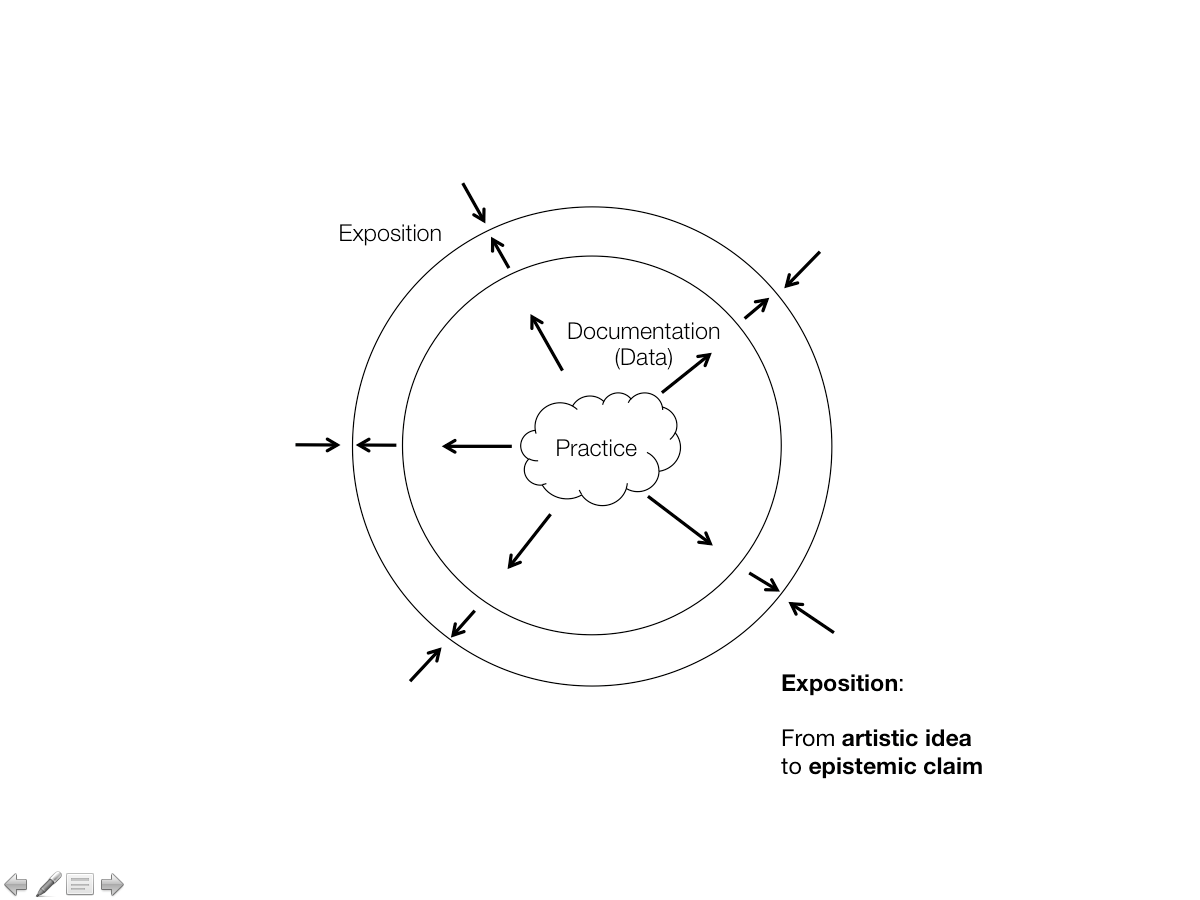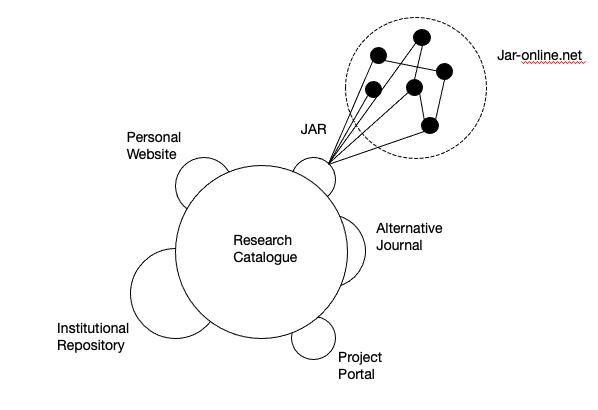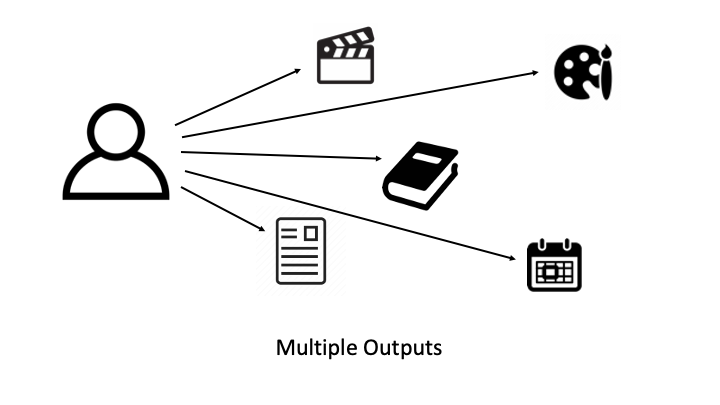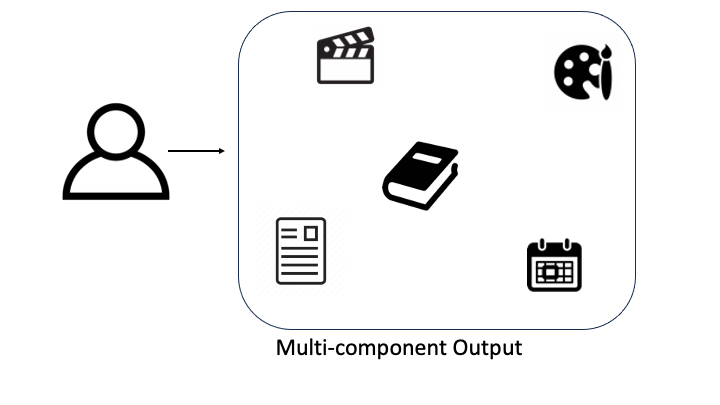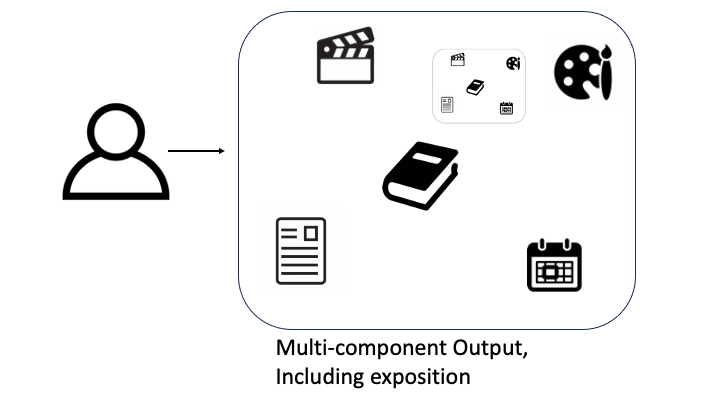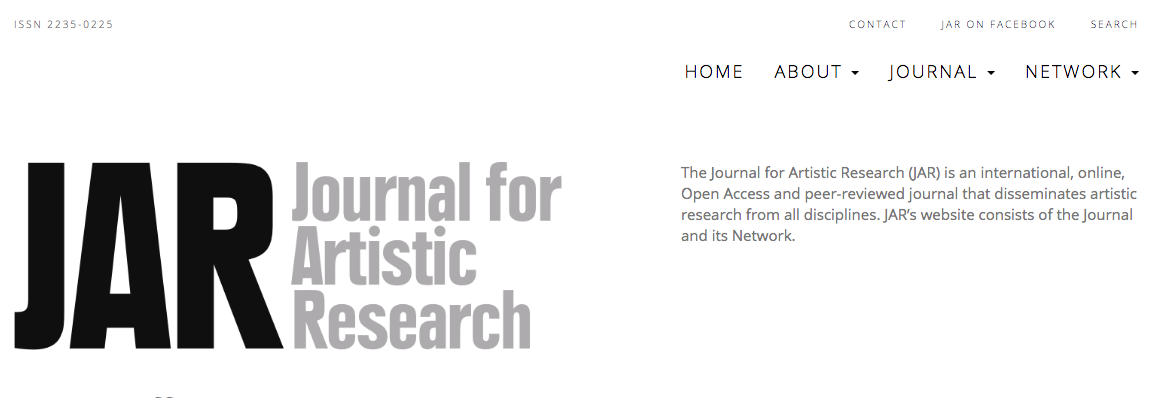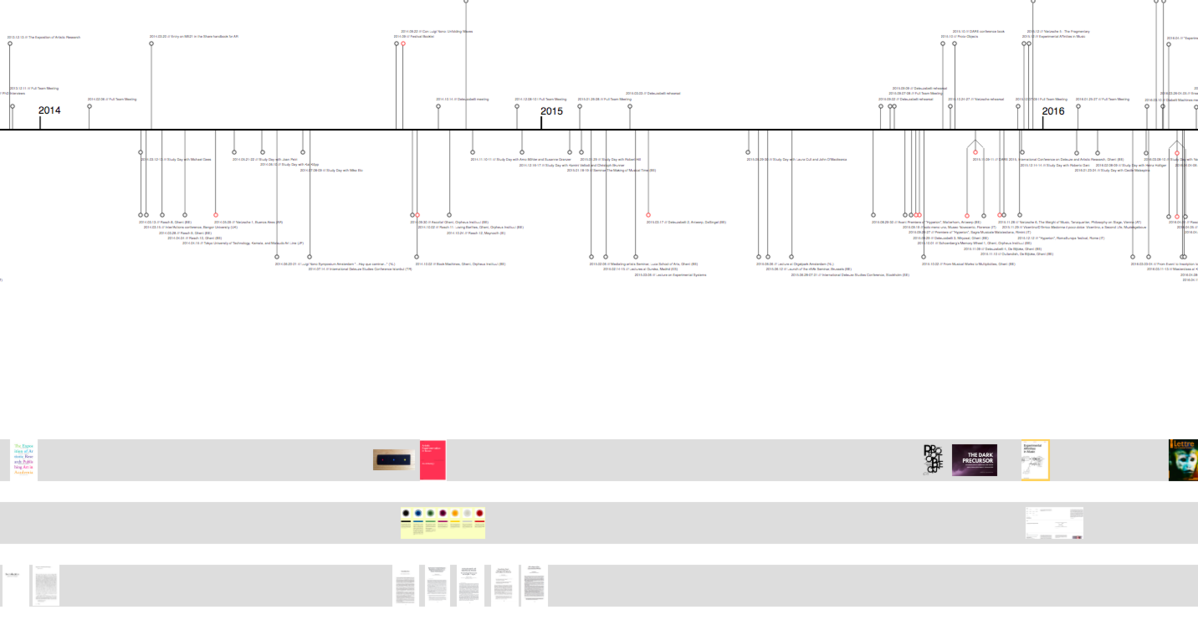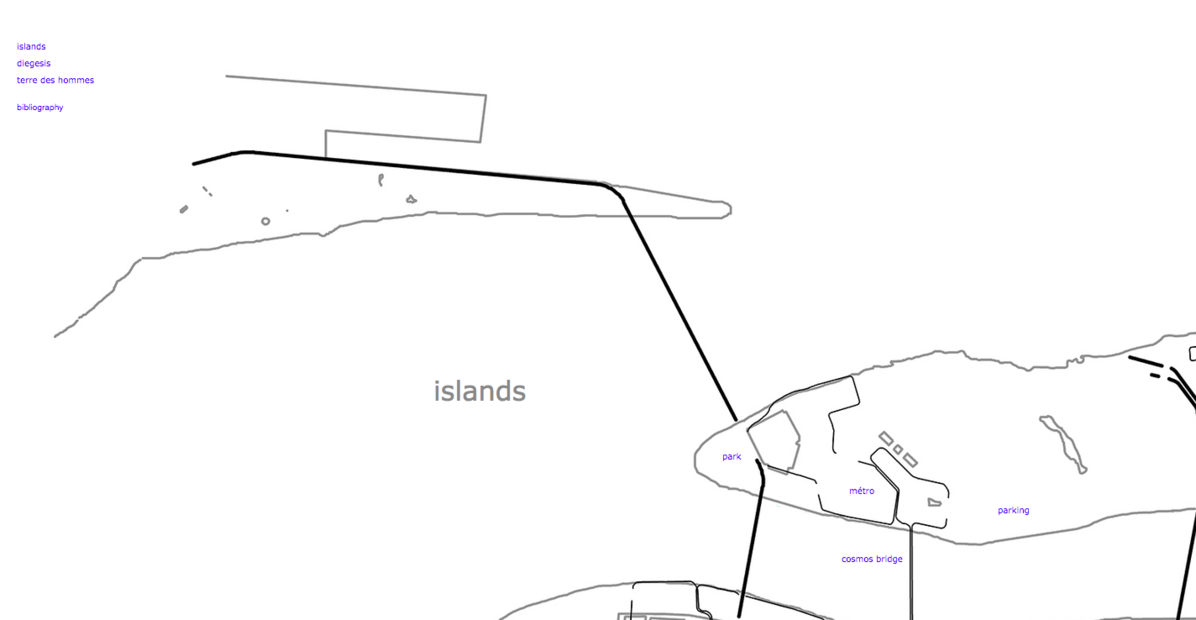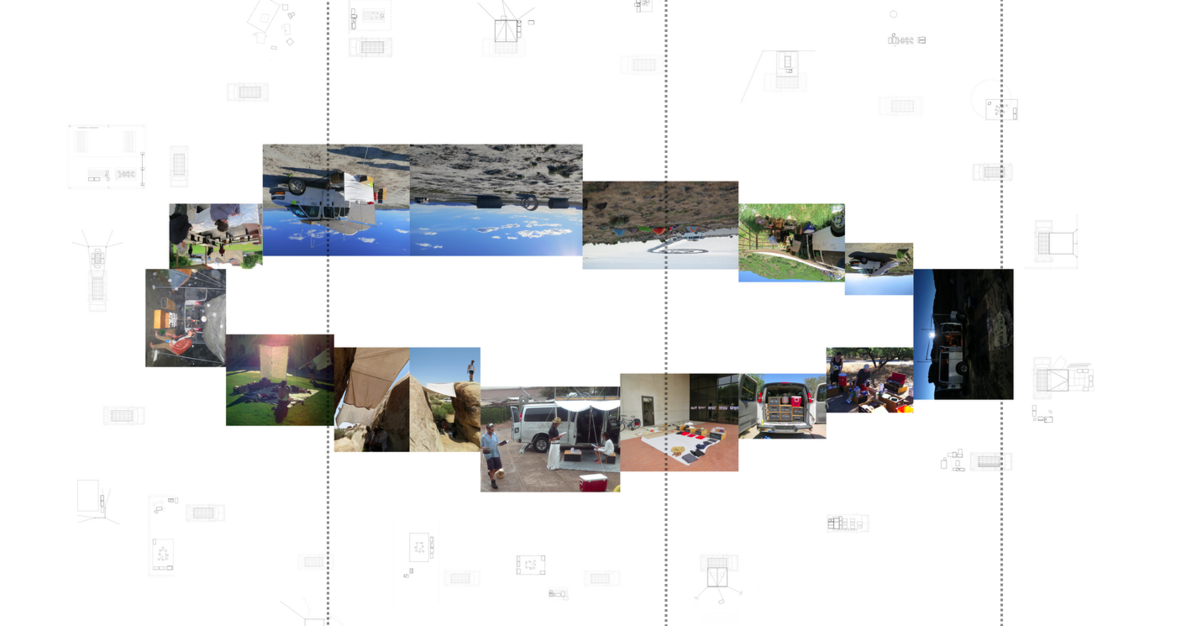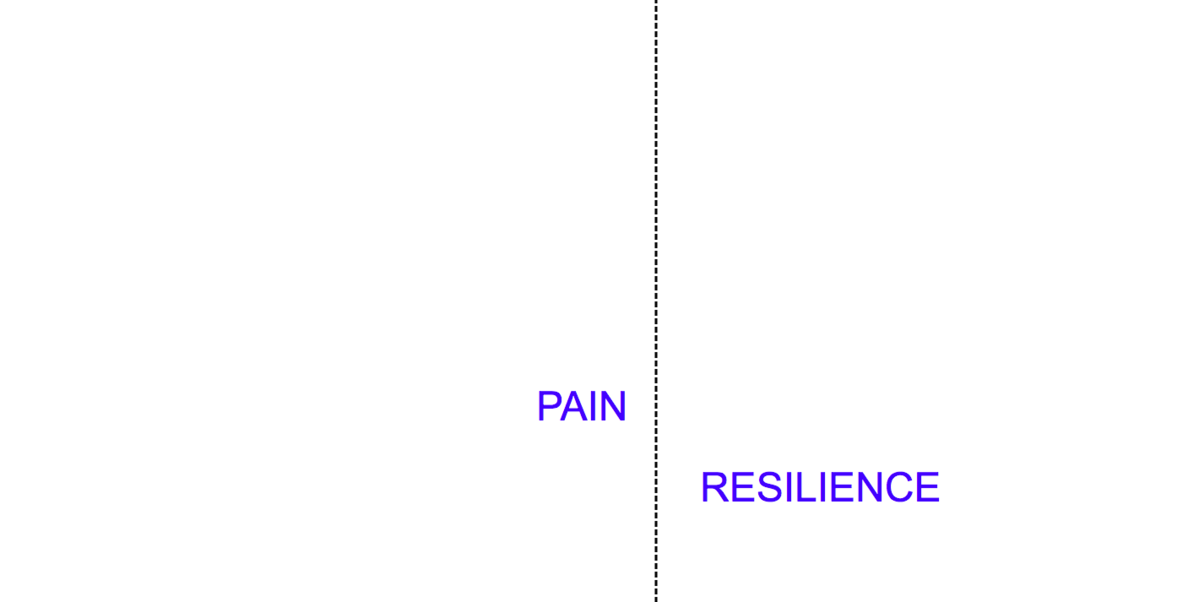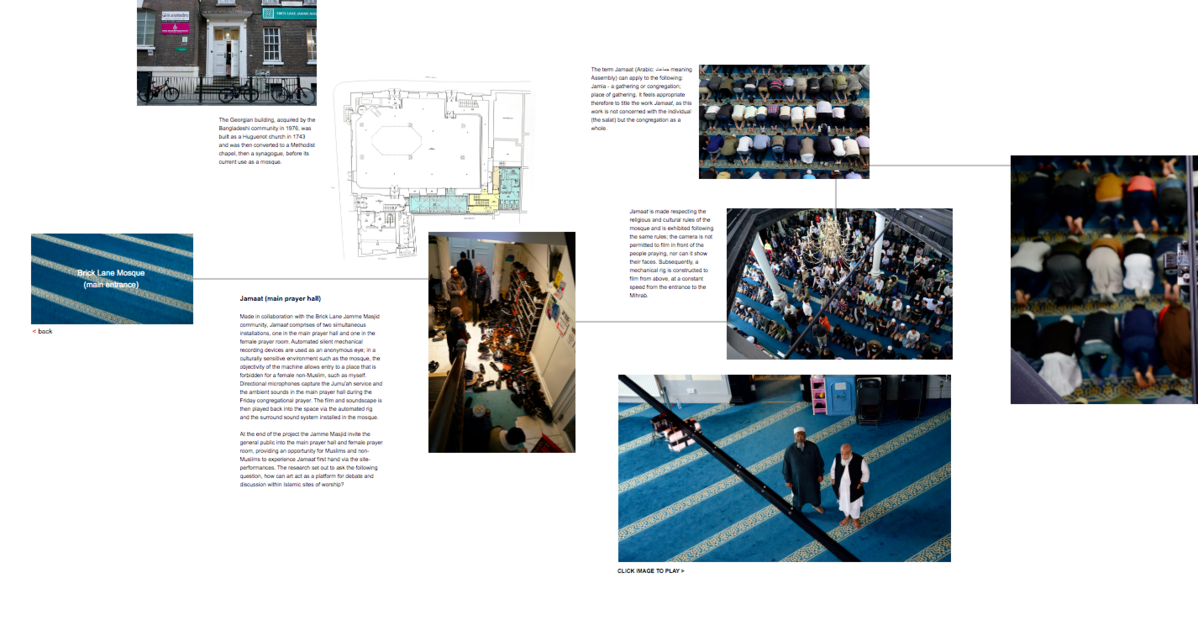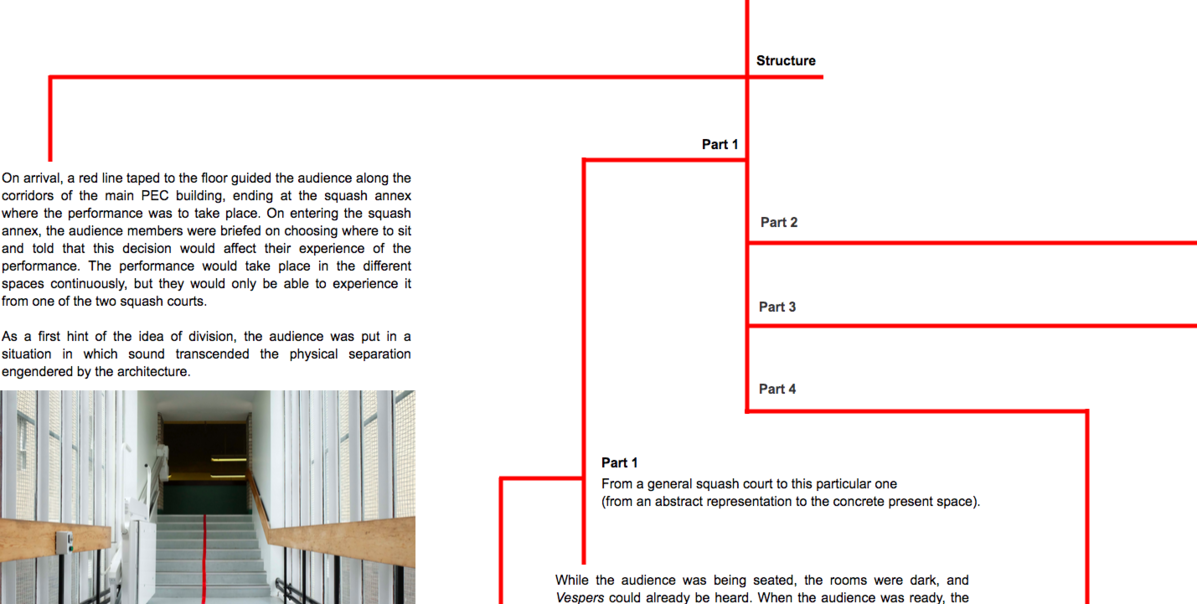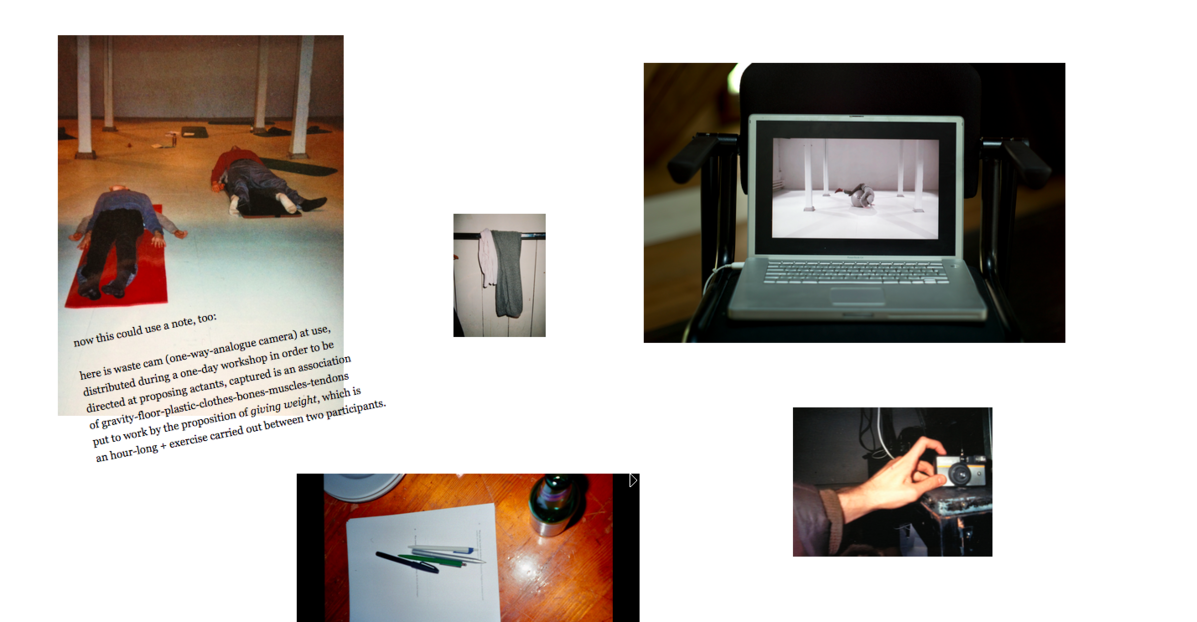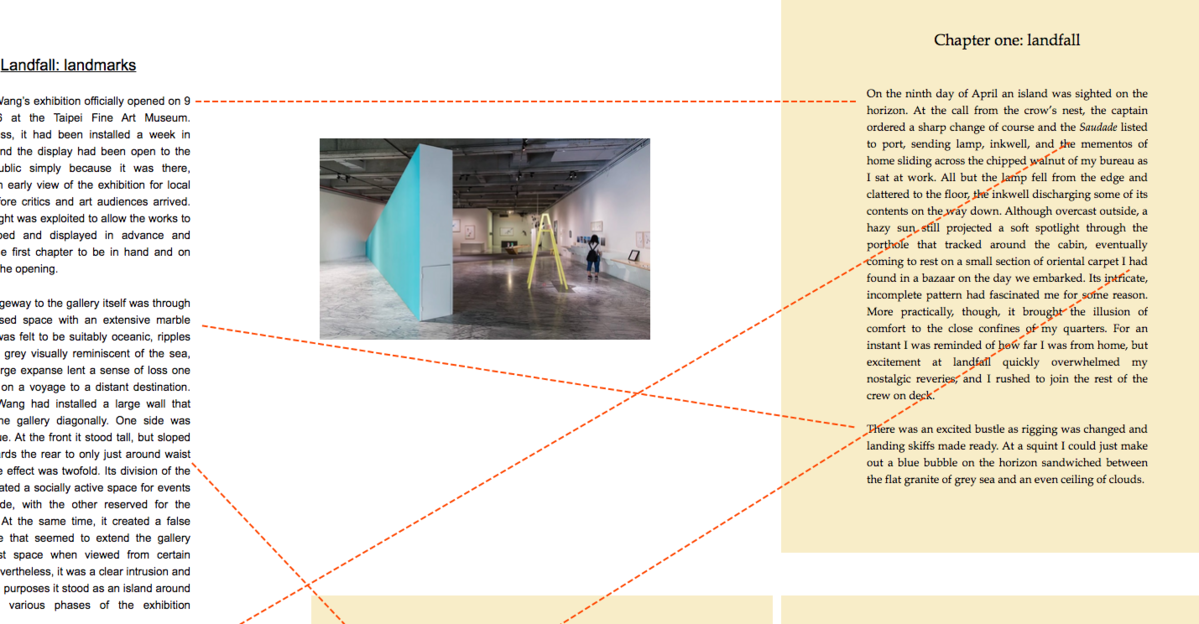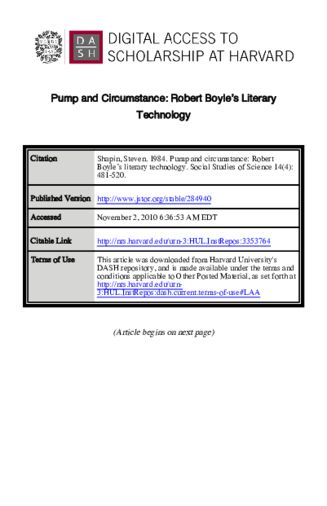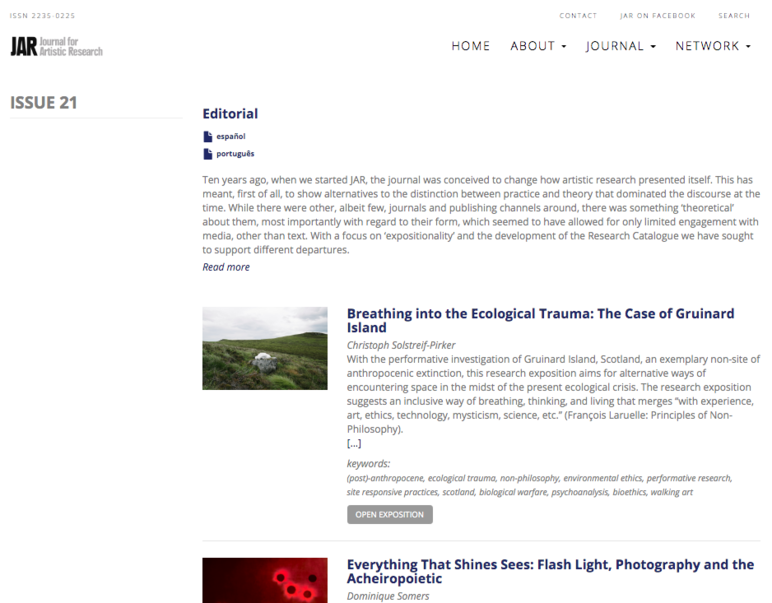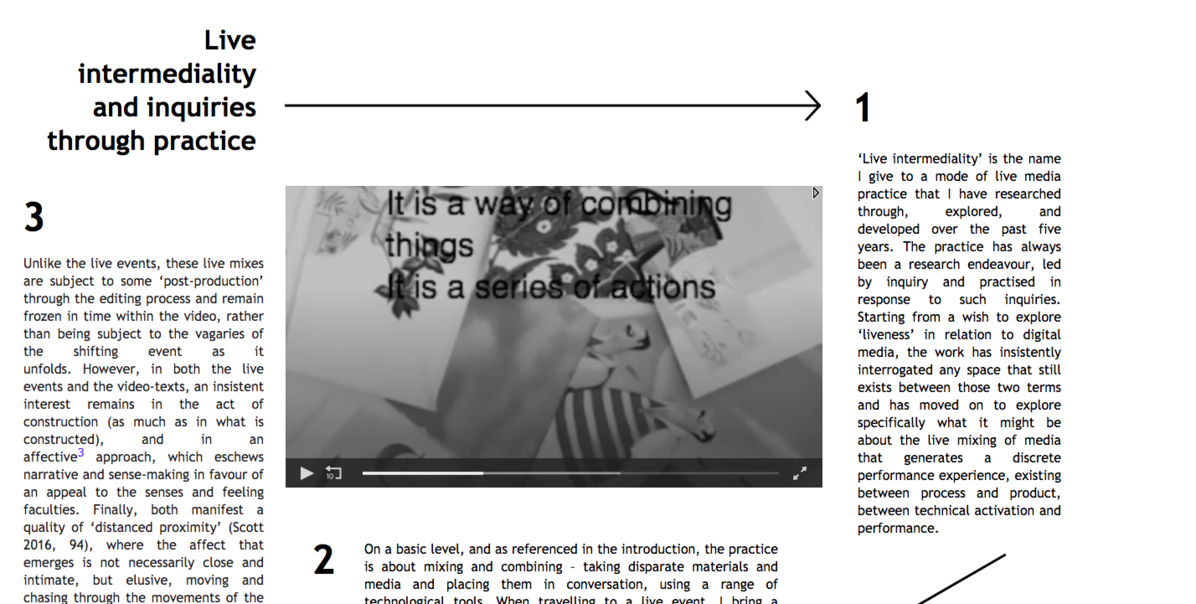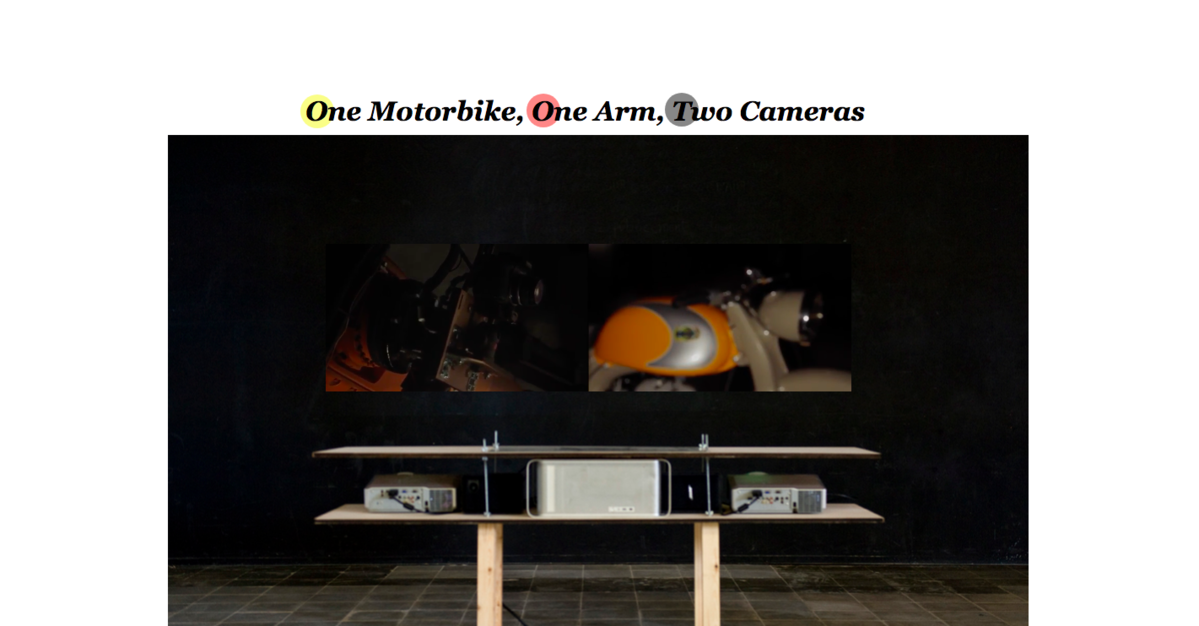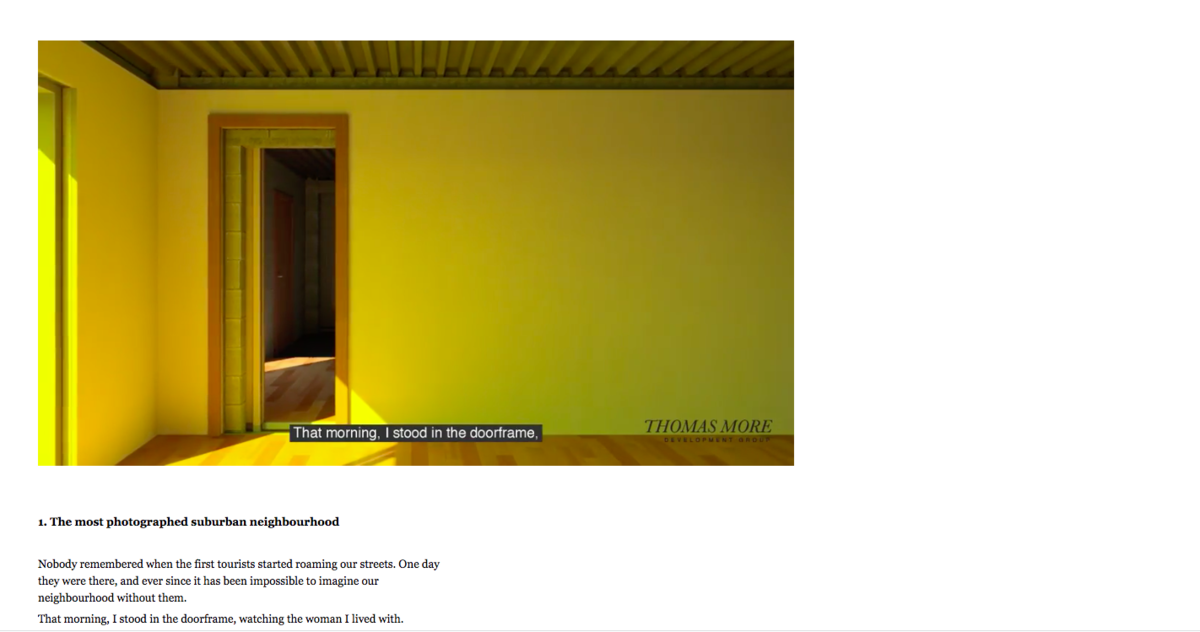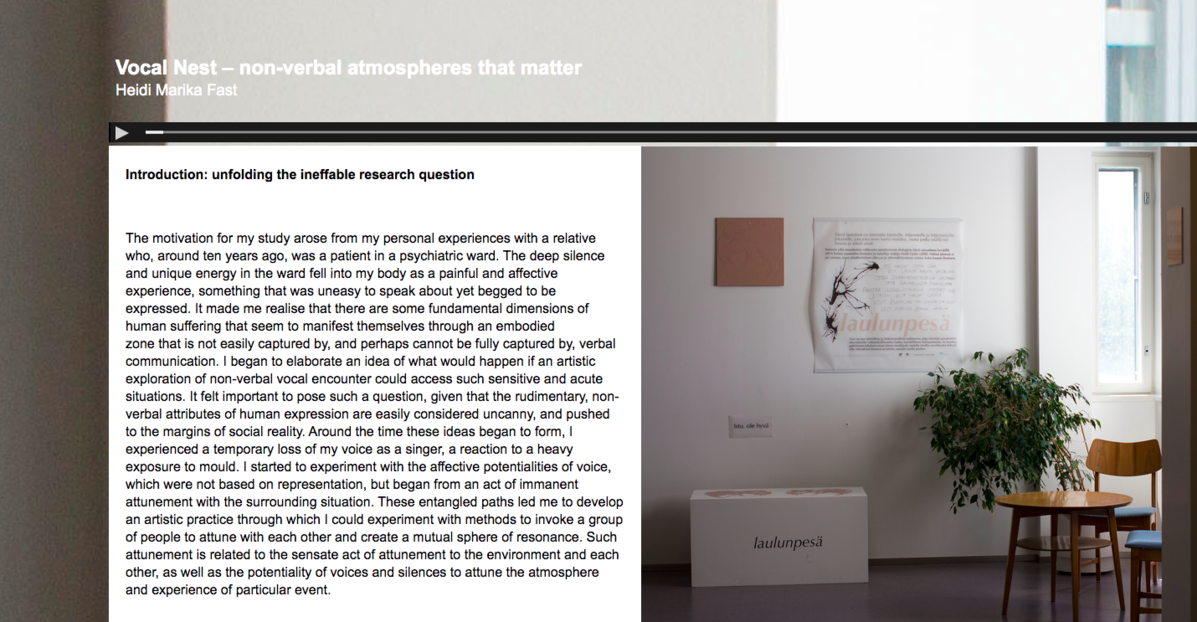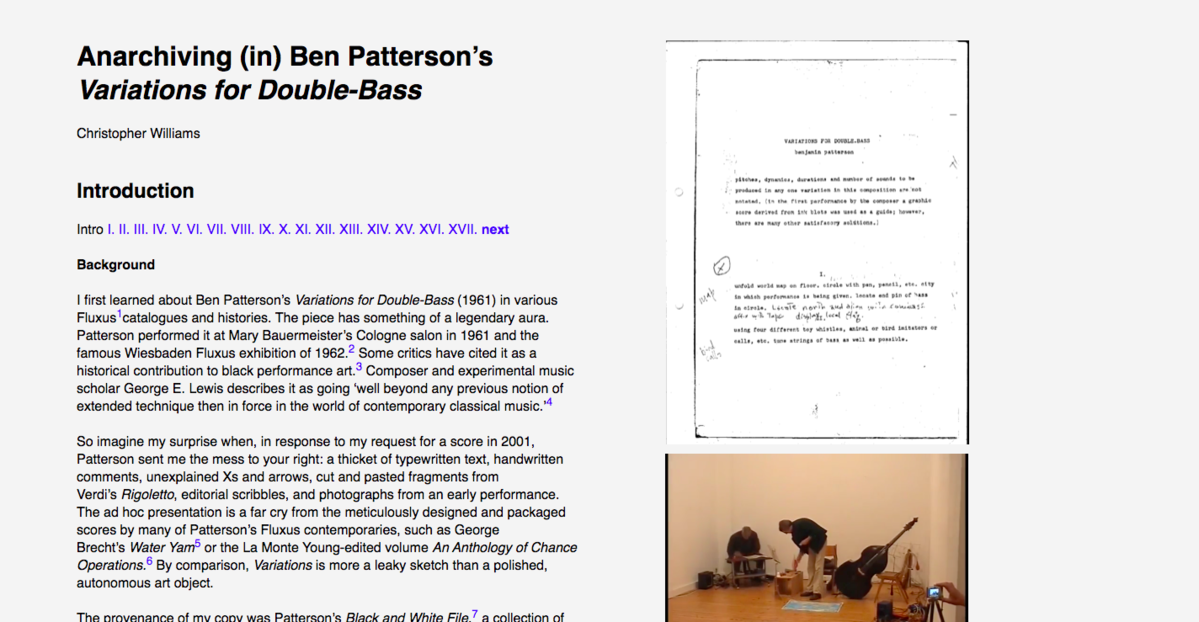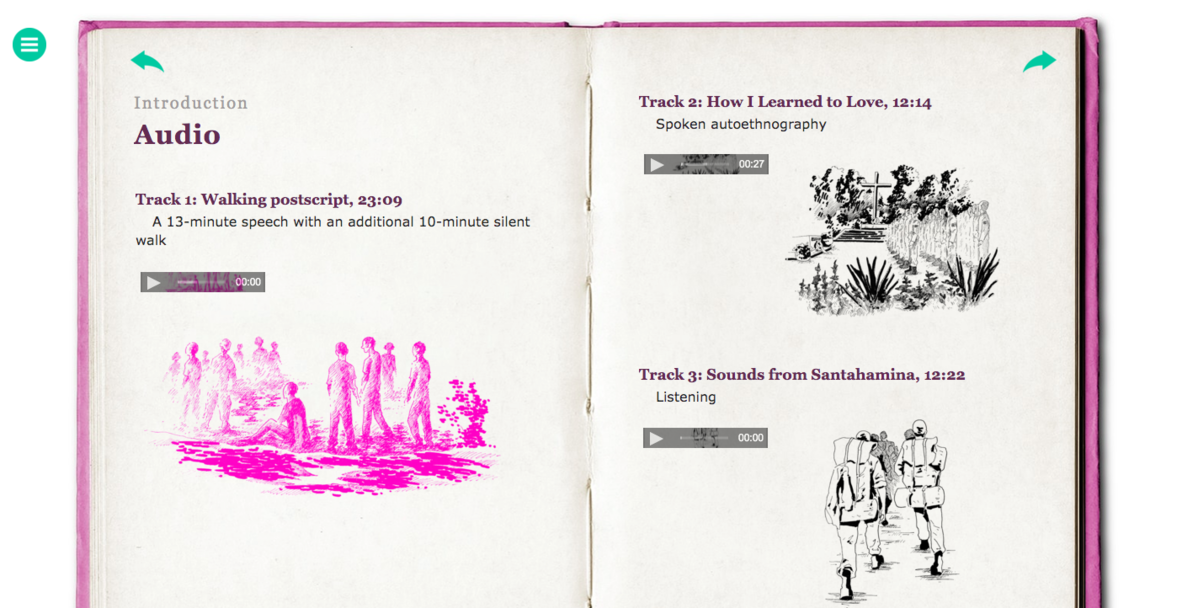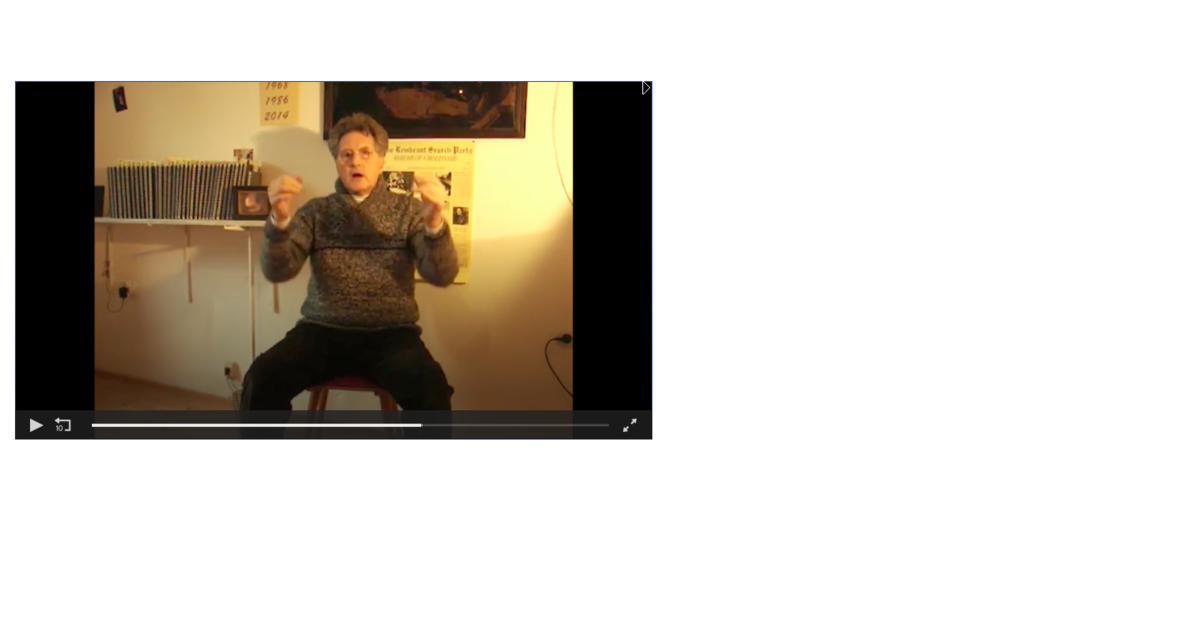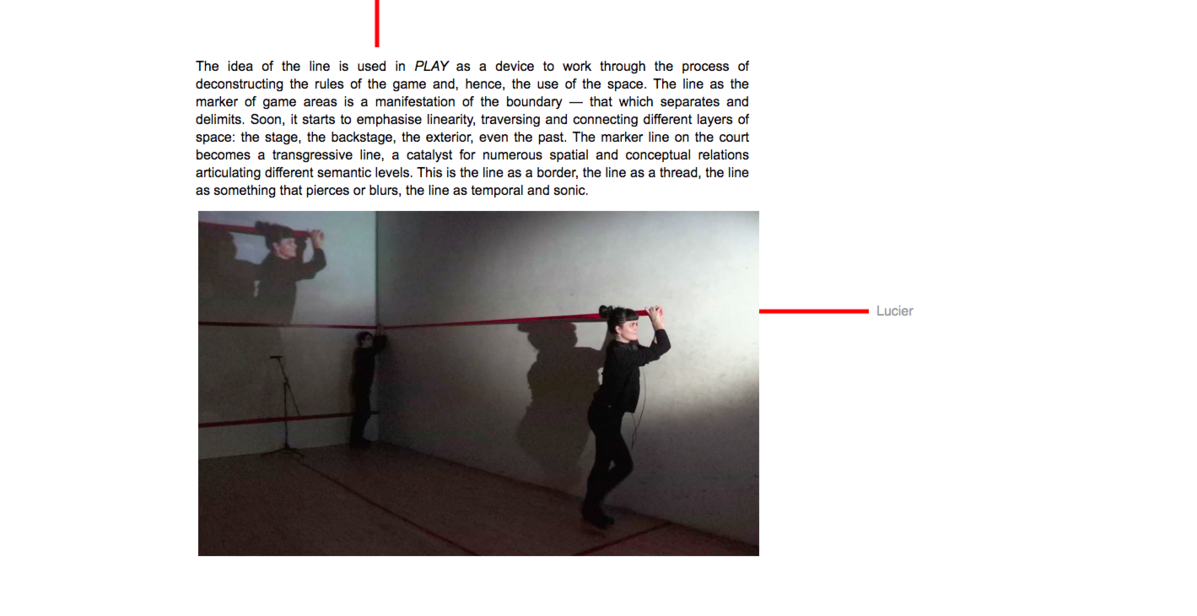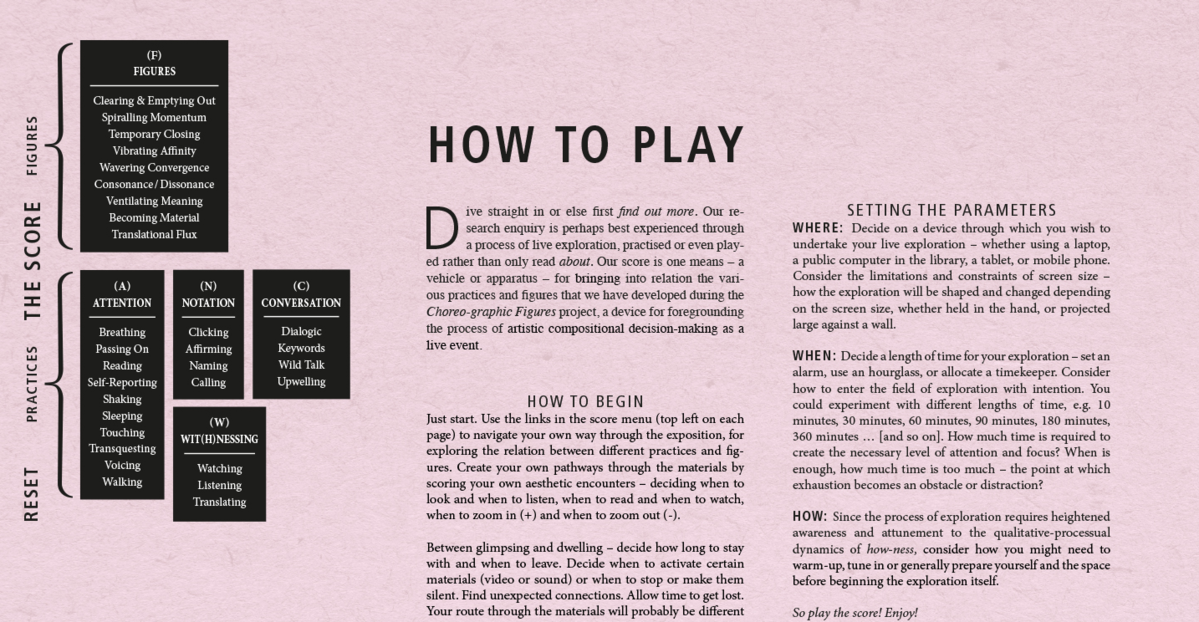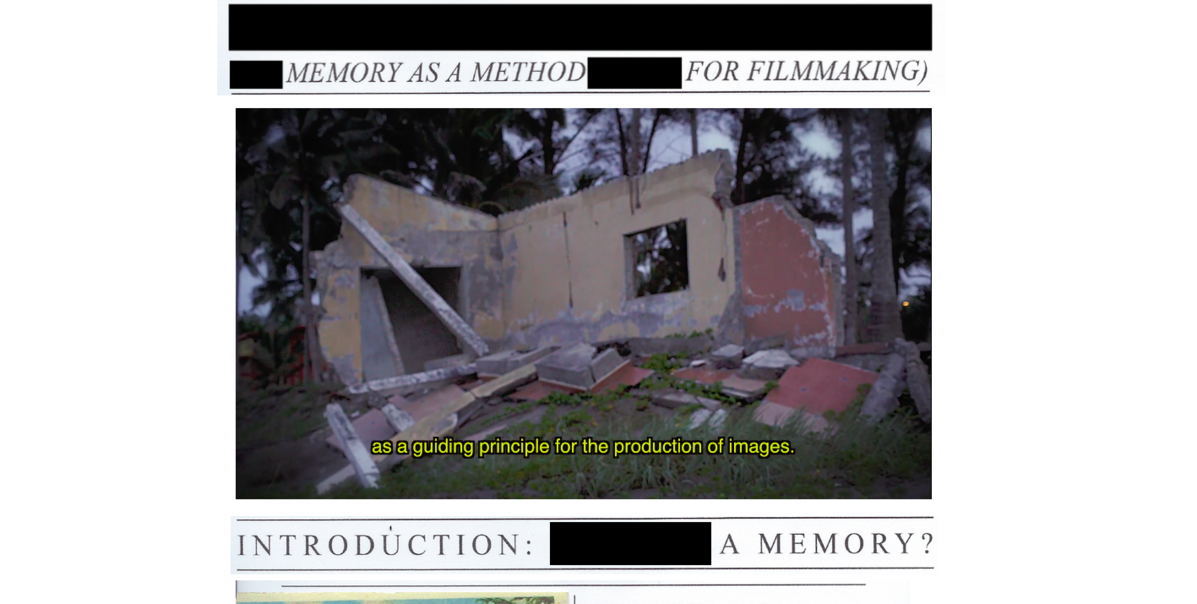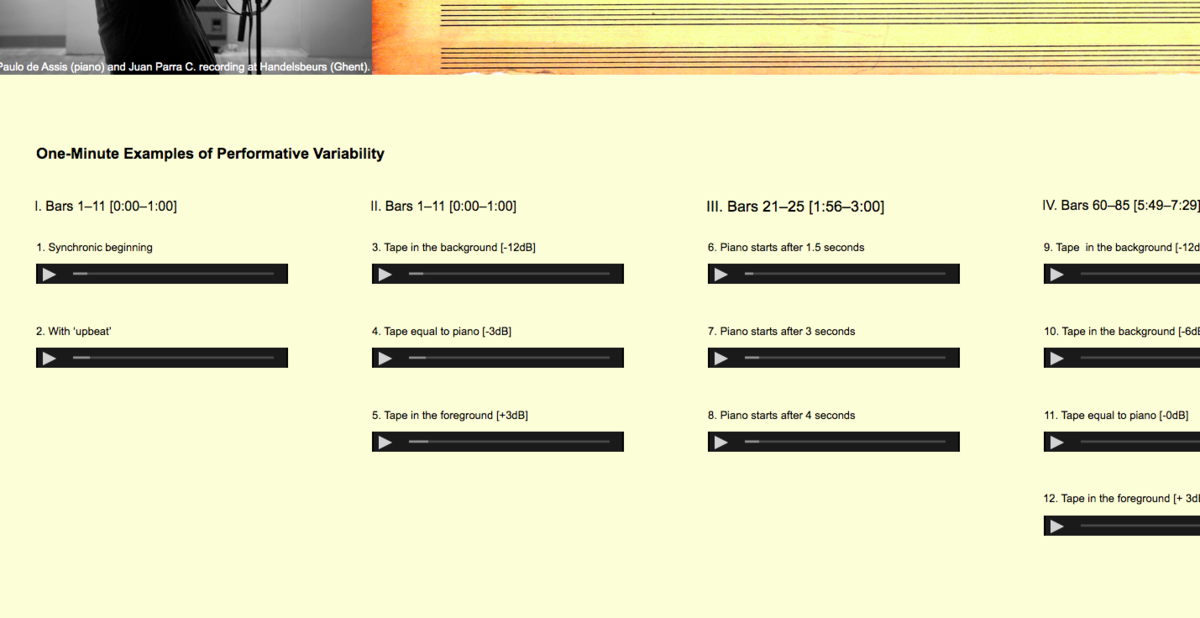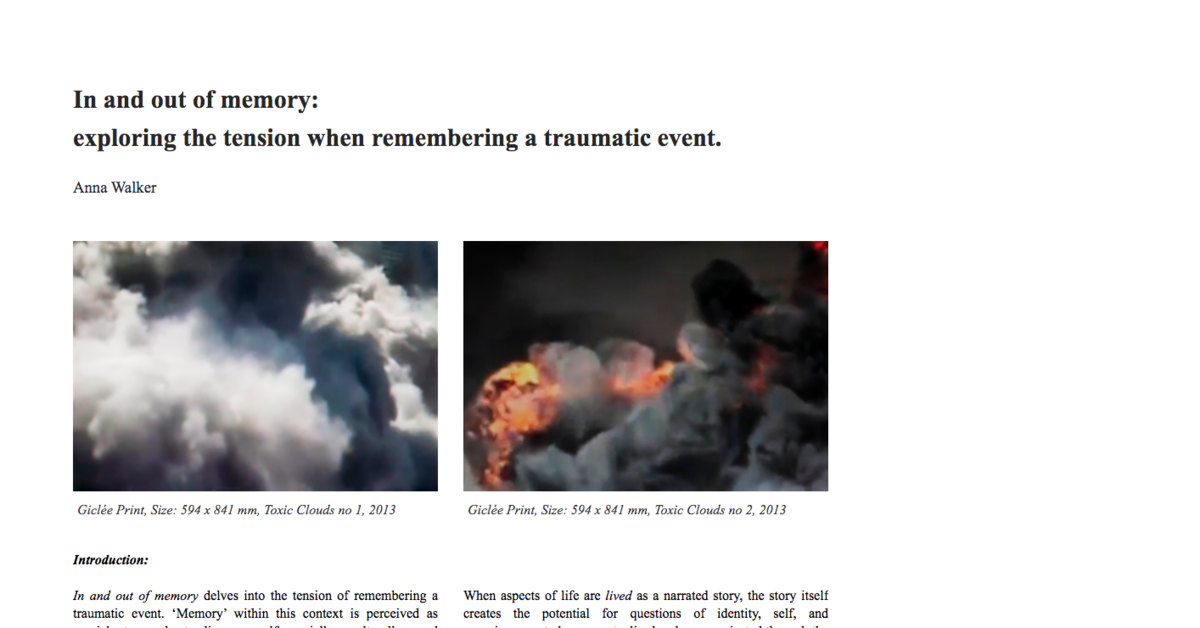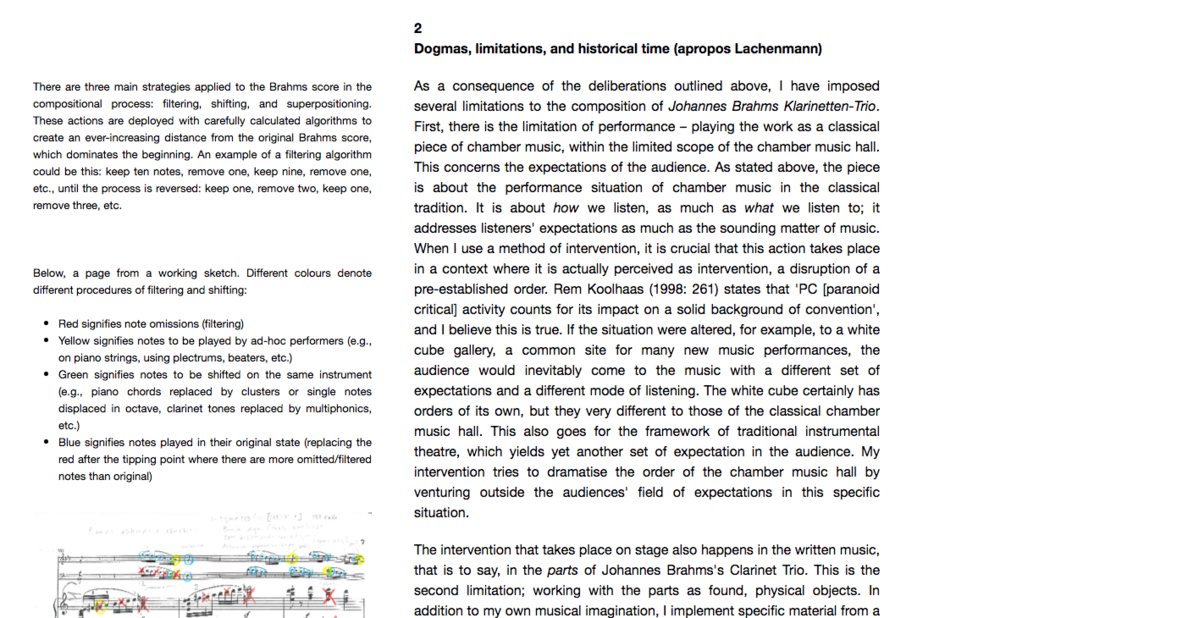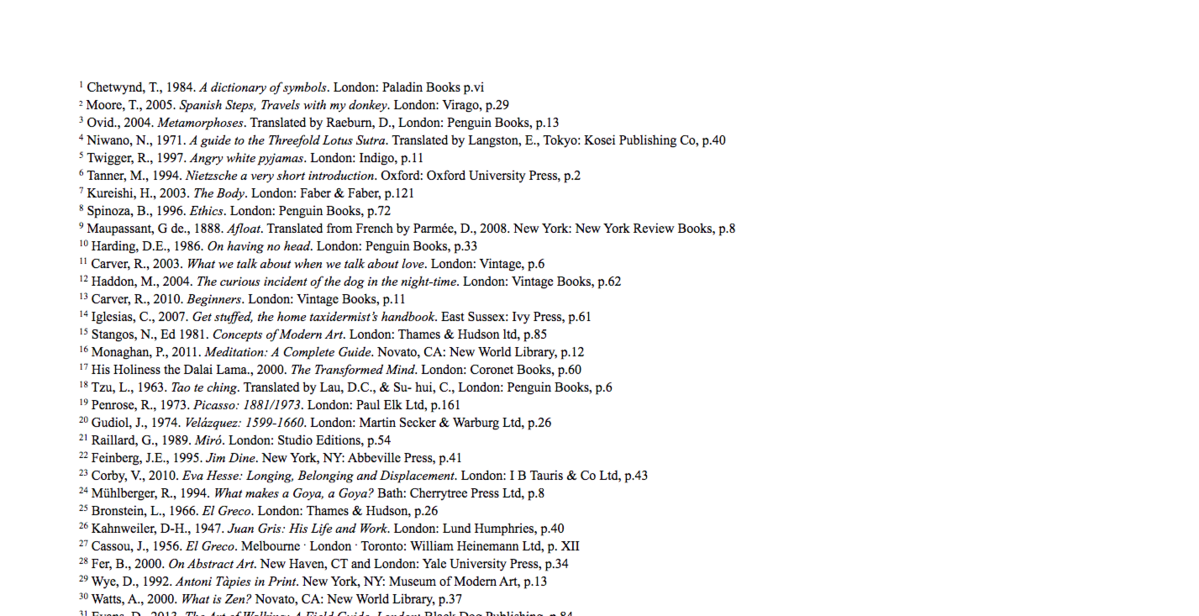Disclaimer: The expositions listed below are mostly from JAR; others could equally have been used as examples. The concepts attached to the examples indicate just one aspect for which the example was picked; all expositions could probably have been featured in different sections. They are not meant to be the best examples for whatever is suggested - it's just the best way in which I can explain certain strategies in expositions of practice as research.
Maps are almost ideally suited for the two-dimensional and potentially large pages that the RC offers.
Timeline
Example: Paulo de Assis, Lucia D'Errico, ‘MusicExperiment21 Timeline‘, Research Catalogue (2018) https://www.researchcatalogue.net/view/106821/243746/2748/688
Geographical maps
Example: Paul Landon, ‘Mapping a Modern Diegesis: Terre des Hommes and Robert Altman's Quintet‘, Journal for Artistic Research, 4 (2013) https://www.researchcatalogue.net/view/17834/52615/0/0
Methodological maps
Example: Mick Douglas, Beth Weinstein, James Oliver, ‘Shuttling‘, Journal for Artistic Research, 9 (2015) https://www.researchcatalogue.net/view/80218/91677/0/1506
Mapping an affective space
Example: Meghan Moe Beitiks, ‘Systems of Pain/Networks of Resilience (First Compilation)‘, Journal for Artistic Research, 14 (2017) https://www.researchcatalogue.net/view/286506/286507/0/1
Mapping a socio-architectural space
Example: JULIE MARSH, ‘Site-integrity: a dynamic exchange between site, artist, device and audience‘, Journal for Artistic Research, 19 (2019) https://www.researchcatalogue.net/view/596787/596788/20/492
Mapping a performance
Example: Matilde Meireles, Diogo Alvim, ‘Trigger Place - A Game of Sound and Architecture‘, Journal for Artistic Research, 14 (2017) https://www.researchcatalogue.net/view/309117/309794/95/155
Mapping archives
Example: Caroline Picard, ‘Ghost Nature‘, Journal for Artistic Research, 7 (2015) https://www.researchcatalogue.net/view/55614/55626/3412/2460
Constellations
Example: Lucie Tuma, Jens Badura, ‘it's doing it – the force of passivity‘, Journal for Artistic Research, 7 (2015) https://www.researchcatalogue.net/view/51120/51126/0/0
Mapping texts
Example: Kit Hammonds, ‘This exhibition is an island‘, Journal for Artistic Research, 13 (2017) https://www.researchcatalogue.net/view/285510/286087/867/236
"The foundational category of the experimental philosophy, and of what counted as properly grounded knowledge generally, was an artefact of communication and of whatever social forms were deemed necessary to sustain and enhance communication. I argue that the establishment of matters of fact utilized three technologies: a material technology embedded in the construction and operation of the air-pump; a literary technology by means of which the phenomena produced by the pump were made known to those who were not direct witnesses; and a social technology which laid down the conventions natural philosophers should employ in dealing with each other and considering knowledge-claims." (484)
"The technology of virtual witnessing involves the production in a reader's mind of such an image of an experimental scene as obviates the necessity for either its direct witness or its replication. Through virtual witnessing the multiplication of witnesses could be in principle unlimited. It was therefore the most powerful technology for constituting matters of fact. The validation of experiments, and the crediting of their outcomes as matters of fact, necessarily entailed their realization in the laboratory of the mind and the mind's eye. What was required was a technology of trust and assurance that the things had been done and done in the way claimed." (491)
This final point describes the conceptual framework and perhaps the most important requirement when publishing in JAR, where what is commonly known elsewhere as a ‘journal article’ is here referred to as an ‘exposition’. This choice of word indicates that a contribution to the journal must expose as research what it presents using the technological framework offered by the Research Catalogue. Depending on your field, ‘exposition’ might not always be a suitable word. For this reason, we encourage you to believe that instead of exposing practice as research, you could also stage, perform, curate, translate, unfold or reflect practice as research. Your chosen descriptor here is less important than the doubling it entails, which creates distance within practice through which understanding can operate.
Expositions understood in this sense sit perfectly well with academic requirements, where some form of writing (or ‘theory’) has to engage with ‘practice’, which on its own very often does not qualify as research. Although functional, the practice/theory model that expresses itself in notions such as ‘practice-based’ or ‘practice-led’ research is highly limiting, since the form that an exposition can take is prescribed and very often modelled on humanities or cultural-studies type writing. It also implies a very simplistic approach to knowledge generation that moves from experience to an understanding that in itself is not influenced by experience. Radically extending the traditional academic model, JAR continues to require some form of distance or doubling that puts research into perspective while categorically refusing to define how such reflexive procedure can take place in the context of the journal.
From: Editorial JAR0, https://www.jar-online.net/en/issues/0
Here's a link to a Dutch project that explains the airpump and its role a little - with the help of videos and texts - http://airpump.ugent.be/en/
Performativity
Example: Vappu Jalonen, ‘Stained Black Mirror‘, Journal for Artistic Research, 6 (2014) https://www.researchcatalogue.net/view/61876/61877/0/0
Voice
Example: Joanne Scott, ‘The Salford samples‘, Journal for Artistic Research, 14 (2017) https://www.researchcatalogue.net/view/301815/301829/0/0
Immersion
Example: Ainara Elgoibar, ‘One Motorbike, One Arm, Two Cameras‘, Journal for Artistic Research, 7 (2015) https://www.researchcatalogue.net/view/57290/133339/0/0
(Fictional) narrative
Example: Bart L. Decroos, ‘The Fourth Wall of Architecture‘, Journal for Artistic Research, 10 (2016) https://www.researchcatalogue.net/view/211221/211222/0/0
Soundscapes
Example: Heidi Marika Fast, ‘Vocal Nest – non-verbal atmospheres that matter‘, Journal for Artistic Research, 16 (2018) https://www.researchcatalogue.net/view/387047/387048/0/0
Multiplicities
Example: Christopher Williams, ‘Anarchiving (in) Ben Patterson's Variations for Double-Bass‘, Journal for Artistic Research, 16 (2018) https://www.researchcatalogue.net/view/387316/387317/0/0
Noise
Example: Anna Walker, ‘In and out of memory: exploring the tension when remembering a traumatic event.‘, Journal for Artistic Research, 8 (2015) https://www.researchcatalogue.net/view/99519/99535/0/0
Autoethnography
Example: Susanna Hast, ‘Walking with Soldiers: How I learned to stop worrying and love cadets‘, Journal for Artistic Research, 21 (2020) https://www.researchcatalogue.net/view/700528/882393/0/0
Schwab, Michael. 2019. “Expositionality.” In Artistic Research. Charting a Field in Expansion, edited by Paulo de Assis and Lucia D’Errico, 27–45. London and New York: Rowman & Littlefield.
Shapin, Steven. 1984. “Pump and Circumstance: Robert Boyle’s Literary Technology.” Social Study of Science 14 (4).
Documentation modes:
- Raw witnessing documentation: exact documentation of what happend
- Contextualizing documentation: contexts needed to understand what happend
- Process documentation: what processes are we witnessing?
- Relational documentation: mapping relationships
- Provocative documentation: document what is challenged
- Experiential documentation: document the encounter
- Indexical documentation: point to what cannot be documented
- Refusal documentation: explain why things should not be documented
- Generative documentation: document what the event generates or can generate
- Critical documentation: document critical engagements with the event
Play
Example: Jean-Marie Clarke, ‘The Rembrant Search Party‘, Journal for Artistic Research, 11 (2016) https://www.researchcatalogue.net/view/250318/291244/0/0
Extension
Example: Matilde Meireles, Diogo Alvim, ‘Trigger Place - A Game of Sound and Architecture‘, Journal for Artistic Research, 14 (2017) https://www.researchcatalogue.net/view/309117/309776/179/1061
Instruction
Example: Emma Cocker, Nikolaus Gansterer, Mariella Greil-Moebius, Simona Koch, ‘Choreo-graphic Figures: Scoring Aesthetic Encounters‘, Journal for Artistic Research, 18 (2019) https://www.researchcatalogue.net/view/462390/462396/0/0
Demonstration
Example: Emilio Angel Reyes Bassail, ‘MEMORY AS A METHOD FOR FILMMAKING‘, Journal for Artistic Research, 19 (2019) https://www.researchcatalogue.net/view/648128/719591/0/0
Variations
Example: Paulo de Assis, ‘Con Luigi Nono: Unfolding Waves‘, Journal for Artistic Research, 6 (2014) https://www.researchcatalogue.net/view/51263/52254/0/0
Development
Example: Anna Walker, ‘In and out of memory: exploring the tension when remembering a traumatic event.‘, Journal for Artistic Research, 8 (2015) https://www.researchcatalogue.net/view/99519/99520/0/0
Complexity
Example: Barbara Macek, ‘Between Agony and Ecstasy: Investigations into the Meaning of Pain‘, Journal for Artistic Research, 16 (2018) https://www.researchcatalogue.net/view/308804/311978/0/0
Explanation
Example: Eivind Buene, ‘Delirious Brahms‘, Journal for Artistic Research, 4 (2013) https://www.researchcatalogue.net/view/23627/23628/0/3778
Speculation
Example: Simon Granell, ‘10 Diary Entries [2010-12]‘, Journal for Artistic Research, 3 (2013) https://www.researchcatalogue.net/view/26162/26163/0/0
